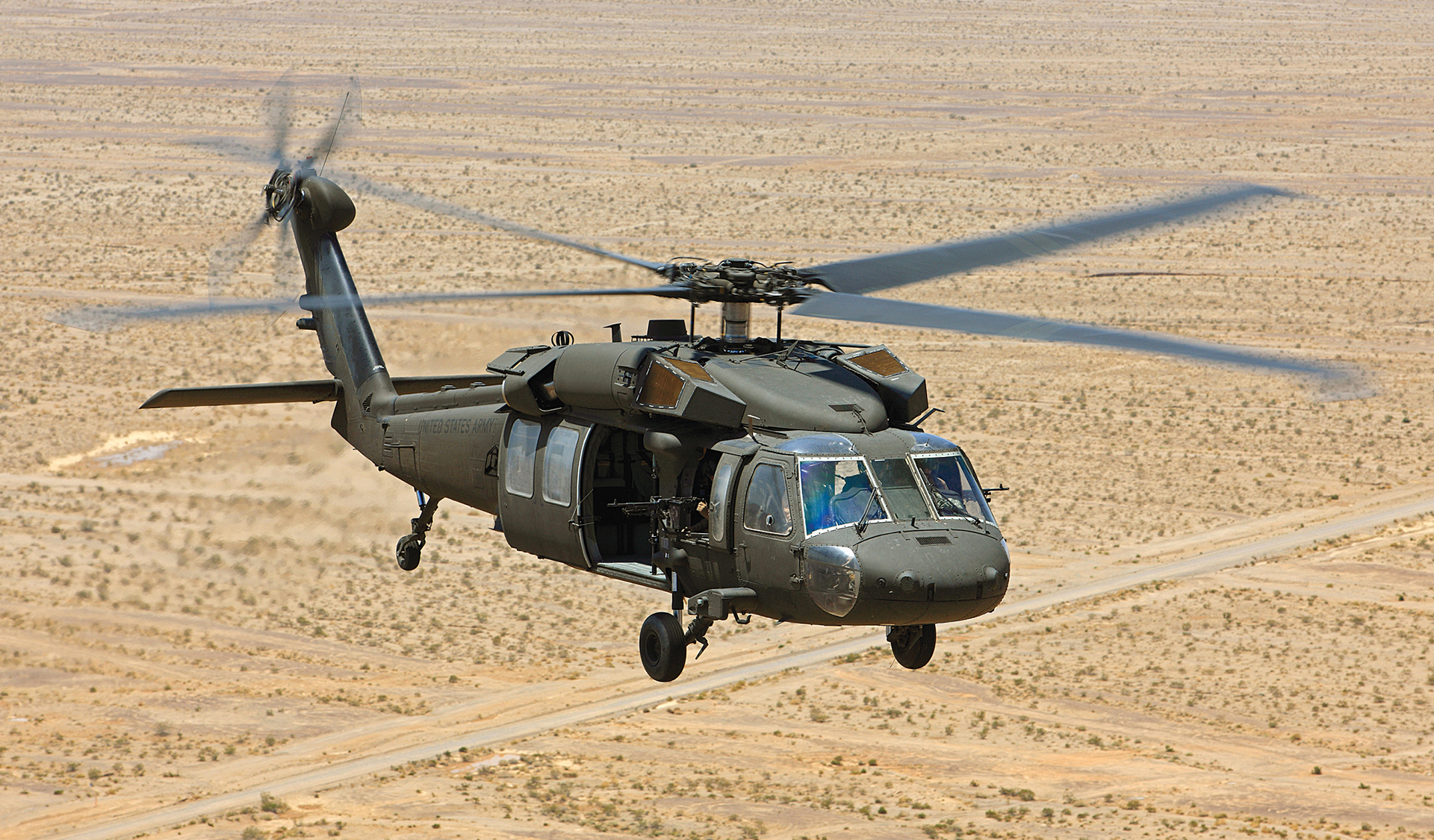The Future of Uh 60 Helicopters: Advancements and Fads
As the aeronautics market advances, the development of rotorcraft technology, specifically within the realm of UH-60 helicopters, has been a prime focus for development and advancement. The future of UH-60 helicopters holds promises of cutting-edge growths that are positioned to reshape the capacities and performances of these versatile airplane. With enhancements in avionics systems, autonomous trip abilities, boosted fuel efficiency, progressed composite materials, and raised objective flexibility, the landscape of UH-60 helicopters is on the brink of an improvement that will not just redefine their operational performance however additionally lead the way for new possibilities in airborne movement.

Enhanced Avionics Systems
Boosted Avionics Systems play an essential duty in modernizing and enhancing the functional capabilities of Uh-60 helicopters. These systems commonly incorporate advanced radar, sensor, and data handling capacities, making it possible for Uh-60 helicopters to run more efficiently in diverse atmospheres and goal scenarios.
Furthermore, Improved Avionics Solutions add to boosted safety measures by providing functions such as surface understanding and caution systems, website traffic crash evasion systems, and autopilot performances. These aspects not just lower the work on pilots but additionally enhance total flight safety and operational effectiveness. As innovation continues to progress, the combination of improved avionics systems will undoubtedly play an essential duty in shaping the future capacities and efficiency of Uh-60 helicopters in numerous operational contexts.
Autonomous Trip Abilities
With improvements in innovation and aeronautics, the combination of self-governing flight abilities is revolutionizing the functional landscape of Uh-60 helicopters. Self-governing flight systems in Uh-60 helicopters are developed to improve objective effectiveness, decrease human work, and boost overall safety and security. These systems use synthetic knowledge, sensors, and progressed algorithms to enable self-governing take-off, touchdown, navigation, and also obstacle evasion.
One key element of autonomous trip capabilities in Uh-60 helicopters is the capacity to operate in complicated environments and difficult weather with minimal human treatment. These abilities not just enhance functional effectiveness however also enable for extended objective periods and enhanced situational recognition.
Furthermore, independent flight systems can aid pilots in performing specific maneuvers, such as aerial refueling and formation traveling, with improved sychronisation and precision - uh 60. By leveraging autonomous innovations, Uh-60 helicopters can adjust to dynamic goal requirements swiftly and properly, ensuring objective success in varied operational situations. The incorporation of autonomous flight capabilities stands for a substantial leap onward in enhancing the flexibility and performance of Uh-60 helicopters in modern military and noncombatant applications
Improved Gas Performance
Using sophisticated propulsion systems and structured style improvements, Uh-60 helicopters have attained remarkable gains in gas performance, setting a new criterion for functional sustainability. These developments in fuel performance have been largely driven by the integration of more fuel-efficient engines, aerodynamic renovations, and using advanced products to reduce weight.

Additionally, the adoption of composite products in the airframe building and construction has actually aided to reduce the overall weight of Uh-60 helicopters, leading to reduced gas consumption. The lighter weight not only improves fuel efficiency but also boosts the helicopter's efficiency and agility.
Advanced Compound Products
The integration of advanced composite materials in Uh-60 helicopters has actually reinvented their architectural strength and resilience. By using these light-weight yet durable products, producers can minimize the helicopter's weight, leading to boosted gas efficiency and enhanced haul ability.
In enhancement to their weight-saving buildings, advanced composite materials also display exceptional resistance to deterioration and exhaustion, causing reduced upkeep requirements and longer operational lifespans for Uh-60 helicopters. The enhanced sturdiness of compounds assists minimize the results of consistent resonance and stress and anxiety during trip, ensuring the structural integrity of the aircraft over time.
Additionally, these materials enable designers to develop intricate forms and frameworks that were previously unattainable with standard materials. This flexibility in design enhances wind resistant performance and enables cutting-edge arrangements that maximize efficiency and ability to move. In general, the consolidation of sophisticated composite materials stands for a substantial jump forward in the advancement of Uh-60 helicopters, leading the way for even more innovative, effective, and durable rotorcraft in the future.
Boosted Objective Flexibility
The use of sophisticated composite products in Uh-60 helicopters has not only boosted structural toughness and durability however has additionally contributed dramatically to their improved goal flexibility. These products provide a high strength-to-weight proportion, enabling the production of lighter yet robust elements that improve the general efficiency of the aircraft. This lowered weight converts right into boosted payload capability, expanded flight variety, and boosted maneuverability, every one of which are important variables in expanding the objective adaptability of Uh-60 helicopters.
Furthermore, the unification of advanced This Site composite materials allows the layout of complex and aerodynamic shapes that were previously unattainable with typical products. This development leads to boosted gas efficiency and minimized upkeep needs, further enhancing the operational adaptability of Uh-60 helicopters. The boosted goal flexibility offered by these materials enables for a bigger variety of mission accounts to be carried out, including rescue, search and transport, clinical discharge, reconnaissance, and more, making Uh-60 helicopters vital properties in various functional circumstances.

Final Thought
Finally, the future of UH-60 helicopters is assuring with technologies in improved avionics systems, self-governing flight capacities, enhanced gas efficiency, progressed composite products, and enhanced goal adaptability. These developments will certainly boost the efficiency, safety, and efficiency of UH-60 helicopters in numerous goals. uh 60. The continued advancement and assimilation of these technologies will make sure that UH-60 helicopters continue to be a vital possession for noncombatant and military procedures in the years to come

Self-governing trip systems in Uh-60 helicopters are designed to improve objective performance, reduce human workload, and enhance total safety. The unification of autonomous flight abilities represents a significant leap onward in boosting special info the versatility and efficiency of Uh-60 helicopters in modern-day army and private applications.
The usage of advanced composite materials in Uh-60 helicopters has not just boosted structural strength and toughness however has also contributed dramatically to their boosted objective versatility - uh 60. The enhanced objective versatility offered by these materials allows for a bigger array of goal accounts to be carried out, including transport, rescue and search, medical evacuation, reconnaissance, and extra, making Uh-60 helicopters essential possessions click this site in different operational scenarios
In verdict, the future of UH-60 helicopters is assuring with developments in enhanced avionics systems, independent flight capabilities, improved fuel efficiency, progressed composite products, and improved objective flexibility.